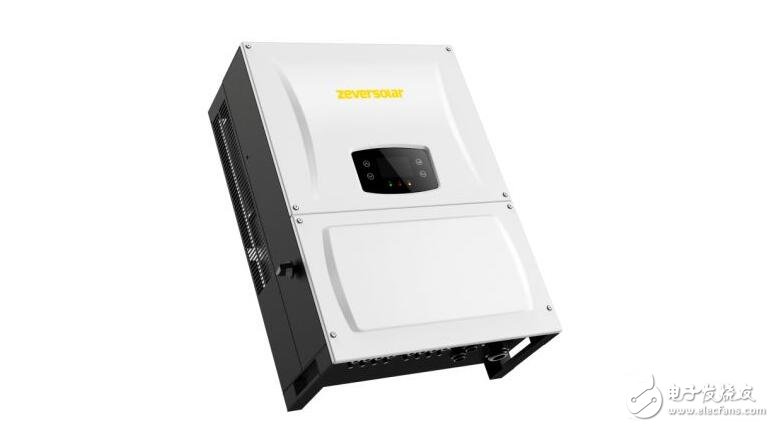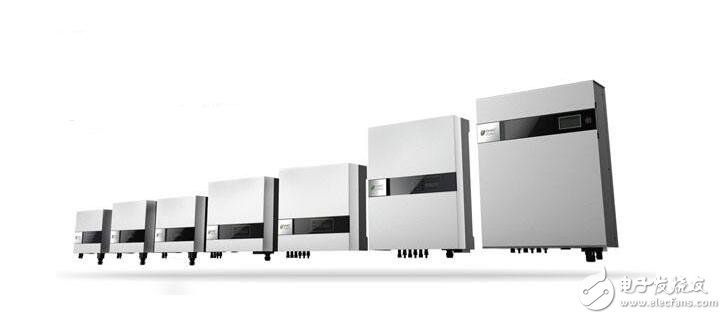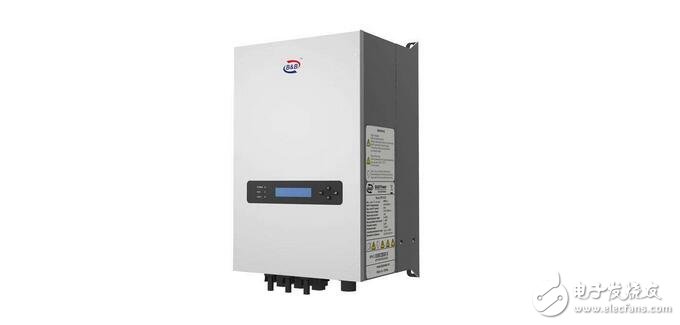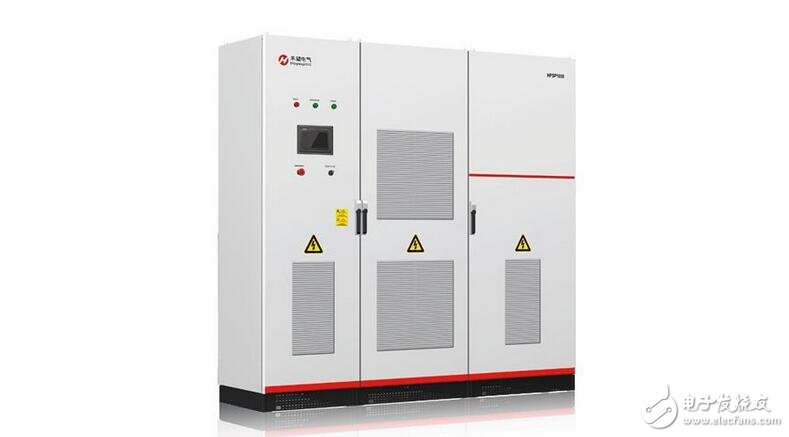Simply put, an inverter is an electronic device that converts low voltage (12 or 24 volts or 48 volts) direct current to 220 volts AC. Because we usually use 220 volt AC to be converted to DC, and the inverter has the opposite effect, hence the name. We are in a “mobile†era, mobile office, mobile communication, mobile leisure and entertainment. In the mobile state, people not only need low-voltage DC power supplied by batteries or batteries, but also need 220 VAC, which is indispensable in our daily environment, and the inverter can meet our needs.

How the inverter works
The inverter is a DC to AC transformer, which is actually a process of voltage inversion with the converter. The inverter converter converts the AC voltage of the grid into a stable 12V DC output, and the inverter converts the 12V DC voltage output by the Adapter into a high-frequency AC power; the two parts are also used more often. Pulse Width Modulation (PWM) technology. The core part is a PWM integrated controller, the Adapter uses UC3842, and the inverter uses TL5001 chip. The TL5001 operates from a voltage range of 3.6 to 40V and features an error amplifier, a regulator, an oscillator, a PWM generator with dead-band control, a low-voltage protection loop, and a short-circuit protection loop.
Input interface part: The input part has 3 signals, 12V DC input VIN, working enable voltage ENB and Panel current control signal DIM. VIN is provided by the Adapter. The ENB voltage is provided by the MCU on the main board. The value is 0 or 3V. When ENB=0, the inverter does not work, and when ENB=3V, the inverter is in normal working condition; and the DIM voltage Provided by the main board, the range of variation is between 0 and 5V. The different DIM values ​​are fed back to the feedback end of the PWM controller. The current supplied by the inverter to the load will also be different. The smaller the DIM value, the current output by the inverter. It is bigger.
Voltage start loop: When ENB is high, the inverter outputs high voltage to illuminate the backlight tube of the panel.
PWM controller: It has the following functions: internal reference voltage, error amplifier, oscillator and PWM, overvoltage protection, undervoltage protection, short circuit protection, output transistor.
DC conversion: The MOS switch tube and the energy storage inductor form a voltage conversion circuit. The input pulse is amplified by a push-pull amplifier and then drives the MOS tube to perform a switching action, so that the DC voltage charges and discharges the inductor, so that the other end of the inductor can be exchanged. Voltage.
LC oscillation and output circuit: ensure the required voltage of 1600V to start the lamp, and reduce the voltage to 800V after the lamp is started.
Output voltage feedback: When the load is working, the sampling voltage is fed back to stabilize the voltage output of the I inverter.
Inverter function
The inverter converts DC power (battery, battery) into alternating current (typically 220v50HZ sine or square wave). In general, an inverter is a device that converts direct current (DC) to alternating current (AC). It consists of an inverter bridge, control logic and filter circuits.
Widely used in air conditioners, home theaters, electric grinding wheels, power tools, sewing machines, DVD, VCD, computers, televisions, washing machines, range hoods, refrigerators, video recorders, massagers, fans, lighting, etc.
Simply put, an inverter is an electronic device that converts low voltage (12 or 24 volts or 48 volts) direct current to 220 volts AC. Because we usually use 220 volt AC to be converted to DC, and the inverter has the opposite effect, hence the name. We are in a “mobile†era, mobile office, mobile communication, mobile leisure and entertainment. In the mobile state, people not only need low-voltage DC power supplied by batteries or batteries, but also need 220 VAC, which is indispensable in our daily environment, and the inverter can meet our needs.
Characteristics
1. High conversion efficiency and fast startup;
2. Good safety performance: The product has five kinds of protection functions: short circuit, overload, over/under voltage and over temperature;
3. Good physical properties: The product adopts all-aluminum shell, good heat dissipation performance, hard oxidation treatment on the surface, good anti-friction performance, and can resist extrusion or impact of certain external force;
4. With load adaptability and stability.

Inverter use
1. The DC voltage should be consistent. Each inverter has a DC voltage value, such as 12V, 24V, etc. The inverter (Figure 4) requires that the battery voltage must be consistent with the DC input voltage of the inverter. For example, a 12V inverter must have a 12V battery.
2. The output power of the inverter must be greater than the power used by the appliance. Especially for appliances with large power at startup, such as refrigerators and air conditioners, it is necessary to leave a larger margin.
3. The positive and negative poles must be connected to the correct inverter. The DC voltage is marked with positive and negative poles. Red is positive (+), black is negative (-), and the battery is also marked with positive and negative, red is positive (+), black is negative (-), and must be positive (red) when connected. Negative (black to black). The cable diameter must be thick enough and the length of the cable should be as small as possible.
4, should be placed in a ventilated, dry place, beware of rain, and the surrounding objects have a distance of more than 20cm, away from flammable and explosive products, should not be placed on the machine or cover other items, the use of ambient temperature is not more than 40 ° C .
5. Charging and inverter cannot be performed at the same time. That is, the charging plug cannot be inserted into the electrical circuit of the inverter output during inverter.
6. The interval between two starts is not less than 5 seconds (disconnect the input power).
7. Wipe with a dry cloth or an antistatic cloth to keep the machine clean.
8. Before connecting the input and output of the machine, first ground the casing of the machine correctly.
9. To avoid accidents, users are forbidden to open the case for operation and use.
0. If you suspect that the machine is faulty, please do not continue to operate and use. The inverter should cut off the input and output in time, and the maintenance personnel or maintenance unit should check and repair.
11. When connecting the battery, make sure there are no other metal objects on the hand to avoid short circuit of the battery and burn the human body.
12, the use of the environment, based on safety and performance considerations, the installation environment should have the following conditions:
(1) Drying: Do not soak or rain;
(2) cool: the temperature is between 0 ° C and 40 ° C;
(3) Ventilation: Keep no foreign matter in the 5CM on the casing, and the other end faces are well ventilated.
13, installation and use
(1) Place the converter switch in the OFF position, then insert the cigar head into the cigarette lighter socket in the car to ensure that it is in place and in good contact;
(2) Confirm that the power of all appliances can be used below the G-ICE nominal power. Insert the 220V plug of the appliance directly into the 220V socket on one end of the converter, and ensure that the sum of the power of all connected appliances of the two sockets is in G- Within ICE nominal power;
(3) Turn on the converter switch, the green indicator light is on, indicating that the work is normal.
(4) The red indicator light is on, indicating that the converter is turned off due to overvoltage/undervoltage/overload/overtemperature.
(5) In many cases, because the output of the cigarette lighter socket is limited, the converter will alarm or turn off during normal use. At this time, it is normal to start the vehicle or reduce the power consumption.
14, matters needing attention
(1) The power of the TV, display, motor, etc. peaks at startup. Although the inverter can withstand twice the peak power of the nominal power, the peak power of some power-compliant appliances may exceed the converter's Peak output power, triggering overload protection, and current is turned off. At the same time, it is possible to drive a plurality of electrical appliances. In this case, the electrical switch should be turned off, the converter switch should be turned on, and then the electrical switch should be turned on one by one, and the highest peak electrical appliance should be turned on first.
(2) During use, the battery voltage begins to drop. When the voltage at the DC input of the converter drops to 10.4-11V, the alarm sounds, and the computer or other sensitive appliances should be turned off in time. If the alarm sound is ignored, The converter will automatically turn off when the voltage reaches 9.7-10.3V, which will prevent the battery from being over-discharged. After the power protection is turned off, the red indicator light will be on;
(3) The vehicle should be started in time to charge the battery to prevent power failure, affecting the start of the car and the battery life;
(4) Although the converter has no overvoltage protection function and the input voltage exceeds 16V, it may damage the converter;
(5) After continuous use, the surface temperature of the casing will rise to 60 °C. Note that the airflow is smooth, and objects that are susceptible to high temperature should be kept away.

Inverter safety issues
Security issues to consider in design
1. The metal casing product must be selected: the car inverter has large power and heat generation. If the internal heat cannot be dissipated in time, it will affect the life of the components, but there is a danger of fire. The metal casing has good heat dissipation characteristics on the one hand and does not burn on the other hand. Products with plastic casings are best not to be used. In order to save costs, some products on the market use plastic casings for 150W or even 175W products. Even if a fan is added to help dissipate heat, it is not recommended because the fan increases the noise during use and affects the comfort of use. Second, the working life is generally short, which reduces the reliability of the whole machine. If the day stops, the consequences can be serious.
2, for driving safety, must choose split products, do not choose integrated products: one-piece shortcomings have four, first, because the car cigarette lighter socket is not very deep, the integrated inverter weight is concentrated in the back The bumps in the car's driving process tend to shake the inverter off or cause poor plug contact. Second, the integrated inverter is inserted into the cigarette lighter socket, and the rear part is exposed for a long time. Plugging in electrical appliances will expose it longer, which will affect the right hand shifting operation. This is closely related to driving safety. Wan attention. Third, since the plug is directly inserted into the cigarette lighter socket, the rear row of the integrated inverter cannot be used, and only the power strip is used for extension. Fourth, the one-piece housing is made of plastic. Everyone knows that the plastic is not resistant to high temperatures. Therefore, if the part of the integrated inverter that contacts the cigarette lighter socket generates high temperature through a large current, the head of the integrated inverter is deformed. Or melting, it can cause fires. For the above reasons, no matter whether it is safe to use or easy to use, it is not possible to use an integrated inverter. Instead, a metal-shell split inverter should be used.
3, 150W power above the inverter must be the distribution bottle clip line: car cigarette lighter fuse is generally 15A, only suitable for appliances with rated power below 150W. If it exceeds 150W, you must use the battery clip wire to take power directly from the battery, otherwise it will burn the car wiring and fuse.
4. It is necessary to select products whose output waveform is sine wave or analog sine wave: the rising edge and the falling edge of the product output waveform of pure square wave output are very steep, and the positive maximum value to the negative maximum value are generated at the same time, so that The load and the inverter itself cause severe destabilizing effects. At the same time, it has poor load carrying capacity and cannot carry inductive loads. If the load is too large, the third harmonic component contained in the square wave current will increase the capacitive current flowing into the load, and in severe cases, damage the load filter capacitor of the load.
5, to have over-temperature alarm and over-temperature protection function: When with high-power electrical appliances, the inverter will generate a lot of heat, if the temperature is too high, one will affect the normal life of the inverter, and second, there is a risk of fire . The third is that if you touch it without knowing it, it will burn your hands. The inverter with over-temperature protection function can send a buzzer alarm when the temperature rises to about 70 degrees, and automatically stop working and cut off the output, thus protecting the safety of the inverter itself and the safety of the personnel inside the vehicle.
6. The input must have undervoltage protection: In many cases, the inverter is used in the parking state, and has the function of input undervoltage protection. When the battery voltage is low to a certain level, a beep will sound to alert the user that the appliance should be turned off. If it is low to a certain extent, it will automatically stop working, so that it can prevent the battery from being over-discharged, resulting in the embarrassment of not being able to drive.
7. It is also necessary to protect the inverter's own safe input overvoltage protection, output overload protection, and output short circuit protection.
Security issues to be aware of during use
1, it is best to use it, remember not to use it on the center console: the inverter is generally heavy. If it is used on the center console, it is easy to fly when it is suddenly braked. It hurts people or smashes the windshield. Oh, pay attention.
2. Do not ignite when using the inverter in the parking state: When the car is ignited, it will generate a high surge voltage, which will easily break through the MOSFET device of the inverter and cause damage to the inverter. The correct approach is to turn off the inverter and then ignite. Wait until the car is on fire before continuing to use the inverter.
3, do not touch the output directly by hand: Although the power is small, it will also be an electric shock, huh, huh.
4. When using a high-power inverter, the appliance above 150W, the inverter must use the battery clip line to directly take power from the battery: the car cigarette lighter fuse is generally 15A, only suitable for appliances with rated power below 150W. If it exceeds 150W, you must use the battery clip wire to take power directly from the battery, otherwise it will burn the car wiring and fuse.
5. In normal use, the inverter input fuse is burnt out. It is best not to replace it yourself: 99% of the inverter is burnt out because the input MOSFET is broken. If the fuse is replaced, it will burn out easily. The fuse on the car. The correct way is to contact the seller or the manufacturer for after-sales service.

Inverter environment
1. Drying: It is not allowed to expose the inverter to rainy days, snowy frosty days, foggy days and other humid environments, and it is not allowed to have water droplets or oil on the inverter power supply.
2. Temperature control: The ambient temperature of the inverter is controlled between 0-40 degrees Celsius.
3. Safety: The inverter cannot be installed in the battery, flammable materials area, fuel storage area and fuel engine.
4. Ventilation: There must be at least 30 mm of ventilation space around the inverter to ensure that the vents of the inverter are not blocked by any items.
5. Dust: The inverter cannot be installed in a dusty environment.
6, battery or battery pack: Try not to use too long cable, but the inverter should be separated from the battery, the battery can also be exposed, the gas generated by it is highly corrosive, and will damage the reverse for a long time. Transformer.
7. Ground connection: The grounding port of the inverter is safely grounded with wires or the ground wire is safely connected to your load.
There are a few different types of slip rings, but the most common type is called a cap slip ring. Cap slip rings have a cylindrical housing with an internal flange that fits over the end of the shaft. They typically have 6 or 12 channels and are available in a wide range of sizes.
Cap slip rings are used to provide electrical power and signals to and from rotating equipment. The channels on the slip ring allow for the passage of current and/or data signals through the ring. This allows for the rotation of devices such as antennae, radar dishes, and wind turbines without having to interrupt or disconnect the power or signal lines.
Cap slip rings are very reliable and can handle high speeds and heavy loads. They are also easy to install and maintain.
In the modern world, companies are always looking for ways to improve the efficiency of their machines and operations. Oubaibo offers a variety of products that can help improve your machine's performance. Their Cap Slip Ring allows for high-speed rotary unions, while their high-pressure swivel joints can handle even the most strenuous industrial applications. With so many options available, there's sure to be an Oubaibo product that can improve your machine's performance.
Cap Slip Ring,High Speed Rotary Unions,High Pressure Swivel Joints,High Pressure Swivel Joint
Dongguan Oubaibo Technology Co., Ltd. , https://www.sliproubos.com